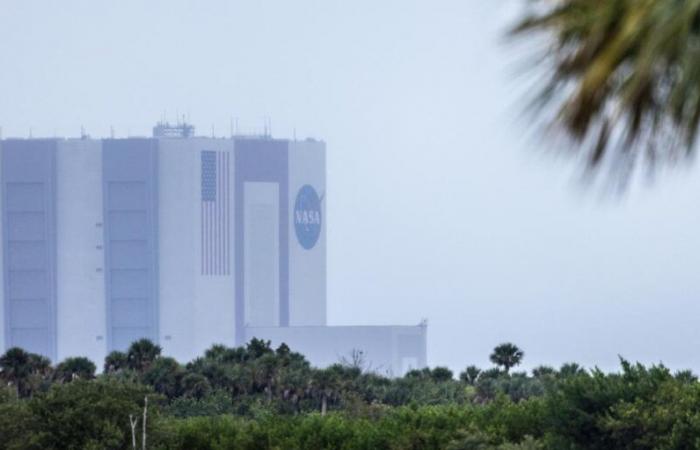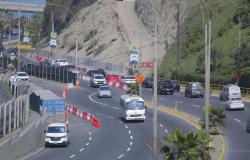In countries more exposed to weather inclement weather, there is the obligation to have adequate infrastructure to detect any type of anomaly. In that sense, USA It stands out when detecting hurricanes or cyclones by an attractive union between the Armadathe NASA and meteorologists.
Las Navy fleetsdeployed in the oceans, need to have knowledge about climatic conditions. With thousands of troops navigating daily, some vulnerability is perceived, so the precise knowledge of the location, trajectory and intensity of these storms is essential.
In this context of vital importance, the USA established a robust infrastructure dedicated to weather and oceanography. He Naval Meteorology and Oceanography Command (NMOC) It plays a central role in providing comprehensive support in these disciplines to US forces and their allies throughout the globe. Simultaneously, the Marine Meteorology Division of the Naval Research Laboratory (NRL) It focuses on the investigation of the intricate atmospheric processes that directly affect fleet operations.
Within the spectrum of research carried out by the NRL Marine Meteorology Divisionone of the most relevant areas focuses on the optimization of prediction and prognosis of tropical cyclones.
To understand this crucial collaboration in depth, an interview was carried out with outstanding researchers from the NRL Marine Meteorology Division. Mindy Surrattexpert in the field, he shared his perspectives with his colleagues Charles Sampsonresearcher, and Chris Camachometeorologist. In this conversation, scientists detailed how access to a rich variety of satellite data from various platforms and instruments, the fruitful collaboration with the community of data users and the availability of low latency observations provided by the Earth’s observation capacity in almost real time for Earth (Lance) NASA, significantly enhance their research and operational work.
Judging by the information provided on its official website, the NRL Marine Meteorology Division It is dedicated to the performance of applied basic research, conceived to deepen the scientific understanding of the intricate atmospheric processes that exercise a direct impact on the operations of the naval fleet.
How is development
One of the specific tasks they perform is the development of guides and tools to strengthen the prognosis efforts of tropical cyclones, being its main operational partner in this area the Typhones Warning Set Center (JTWC)a unified command of the Air force and the Armada Based on Pearl Harbor, Hawaii. In addition, they maintain close collaboration with National and Central Pacific Centers of NOAAwhich together allows them to offer global coverage for the forecast of tropical cyclones that affect the USA.
The Florida Hurricanes Central, to graph the theme
Getty Images
The relevance of the meteorological forecast for the Navy is undeniable, since tropical cyclones and severe storms represent a constant threat to ships deployed on the high seas and for the bases strategically located in the coastal areas, regions that often experience the onslaught of these powerful natural phenomena.
In the absence of air recognition in the extensive area of responsibility of the JTWC, which covers from the International Date Change Line to the African continent in the Northern Hemisphere And the totality of South Hemispherethis operating center depends almost exclusively on a sophisticated network of satellite platforms provided by various countries and agencies.
This constellation of satellites offers essential global coverage for the monitoring and detection of tropical cyclones, especially in those regions characterized by the shortage of conventional weather data. This integral network combines the capabilities of geostationary satellites and polar orbit, each providing strengths and offering unique perspectives. For example, although geostationary sensors provide a global coverage With high temporary resolution, its current wavelengths do not reach the level of detail provided by the sensors installed aboard the polar orbit satellites.
In the USAthere is a formal agreement that delimits the responsibilities of each organization within the forecast of tropical cyclones, adopting a collaborative strategy to “divide and conquer.” He National Hurricanes Center has jurisdiction over the Atlantiche Central Pacific Hurricanes Center It is in charge of Central Pacific and the JTWC covers the Western Pacifiche Indian ocean and all South Hemisphere. The sum of these areas of responsibility forms a comprehensive global coverage for the monitoring and prediction of tropical cyclones.
Mindy Surratt ensures that the NRL integrates data from a wide range of agencies internationally, including the NASAthe NOAAthe US Air Forcethe US space force and various associated European space agencies. This vast amount of information is processed and disseminated to the tropical hurricane centers and cyclones of the US through the Automated tropical cyclones prognosis system (ATCF). In addition, the NRL provides information publicly to other prognosis centers around the world through its website specialized in tropical cyclones (TCWEB), which underlines the inherently collaborative nature of this global effort.






